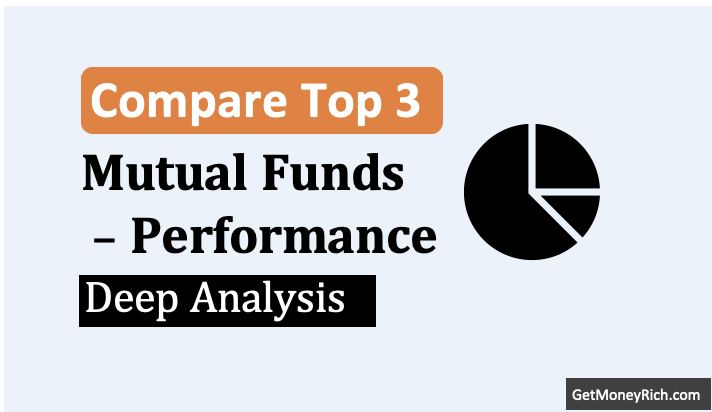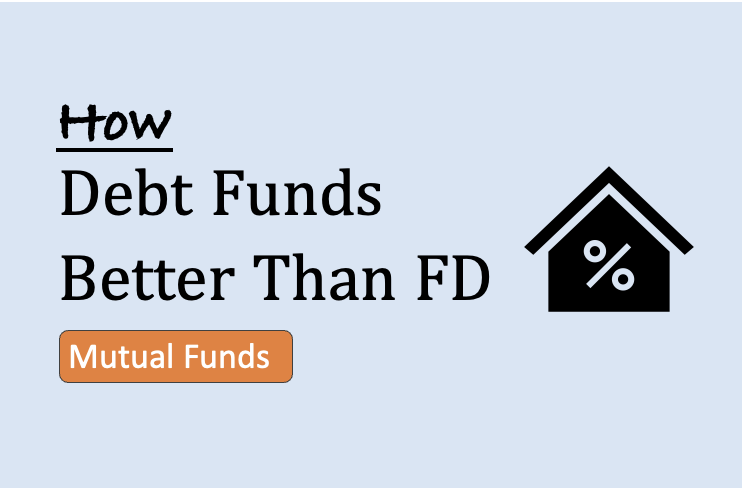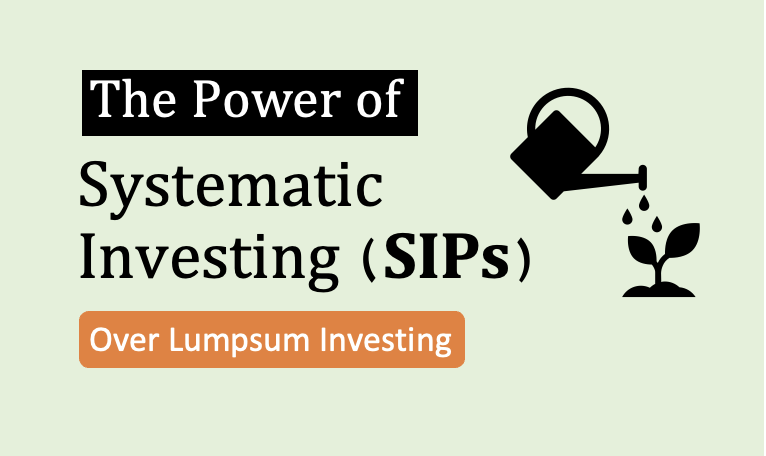When I was a beginner in investment, “mutual fund” was the most heard term. But more than I was interested to invest in it, I wanted to know what is a mutual fund in first place?
I could understand that, mutual fund is an investment option like stocks, real estate, gold, bonds, etc. Investment options are alternatives, where money can be invested for different investment goals.
But apart from this knowledge that mutual fund is an investment option, generally people do not know more about mutual funds. Knowing more is important? Yes. Why? Because if we know the anatomy of a mutual fund, investment in them will be more informed.
How informed investment in mutual fund helps?
Broadly speaking, there are two types of mutual funds. One type is risky. Means there are higher chances of risk of loss, following a bad investment decision.
The other type is almost risk free. Means money invested in such mutual funds remains safe.

This is where the things gets interesting for investors. How? Risky funds has potential to generate higher returns. Risk free funds can generate only low returns.
Hence, in order to generate high returns from mutual funds, one must invest in “risky funds”. This is where “knowledge of mutual fund” helps. How? It helps in taking “calculated risks”.
Means, though one is investing in “risky funds”, but still the risk of loss is minimum. How? Because one knows what he/she is doing. This is what means by calculated risks.
How knowledge of Mutual Funds makes “taking calculated risks” easier?
A person who is well informed in mutual funds, can pick a right mutual fund for self.
Every mutual fund is unique. Hence the risk-return balance offered by each fund varies. But only an informed investor can make a difference between mutual funds.
For majority people, all mutual funds are either equity or debt based. But in reality, there are more shades to mutual funds.
How to decrypt these shades? By knowing more about the mutual funds.
In simple language, there are too many types of mutual funds available in the market. Talking of the two extremes, some funds are ‘high risk’ & some are ‘risk free’.
But there are host of mutual funds which lies within these two extremes. These funds offer a range of risk-return possibilities.

Depending on ones investment goals, one can pick a fund with a specific risk-return profile.
But the limitation is, to pick mutual funds in such details, the investor must be “informed”.
In short we can say that, knowledge about the anatomy of mutual funds helps the investors to pick the best mutual funds as per ones requirement.
So let’s see few details about mutual funds whose knowledge will help us to pick the right type of fund for self.
What is a mutual fund “Scheme” & “Unit”?
Mutual fund is an investment product. By buying this product, people can experience the cycles of investment.
What we actually buy is not a mutual fund. Technically speaking, what we buy is this:
A unit in the mutual fund scheme.
Here the keywords are two:
- Unit, and
- Scheme.
Mutual fund is a business. Within the business, there are several types of mutual funds which operate. We call it Schemes. Schemes are products for a mutual fund company. What we buy are units (share) of a scheme.
Like a company has number of shares, a mutual fund scheme has number of units.
Example: Axis Bluechip Fund (G)

How a mutual fund business is run?
Let’s see a mutual funds from the birds eye view. This will tell us, how a mutual fund business runs.

Let’s take example of Axis Mutual Fund to understand how its business is operated.
SEBI: It acts as a regulator for the mutual fund industry. This is a Government of India (GOI) body.
Sponsors: They are the people who set-up the mutual fund. They are also the promoters of the fund. In case of Axis Mutual Fund, the sponsor is Axis Bank Ltd.
If mutual fund is a business, then sponsors are its owners.
Trustees: This is an entity whose main objective is to take care of the investors investing in various schemes of mutual funds. In case of Axis Mutual Fund, the trustee is Axis Mutual Fund Trustee Limited.
If mutual fund is a business, then trustees are its Board of Directors.
AMC: This is an acronym for the Asset Management Company. It is the AMC which virtually run the whole mutual fund business and its individual schemes. In case of Axis Mutual Fund, the AMC is Axis AMC.
If mutual fund is a business, then AMC is its operating work force.
What goes into the operations of a mutual fund?
- Scheme Launch.
- Marketing a Scheme.
- Fund collection against a scheme.
- Investment of the collected funds.
- Taking care of all money transactions.
How a mutual fund scheme is built?
It is the responsibility of the AMC to create a scheme. For a mutual fund AMC, “Schemes” are its products.
In the process of creation of scheme, the AMC prepares the offer document. This offer document is the foundation of any mutual fund scheme.
What is included in the offer document? The main thing which the offer document talks about is the “Investment Objective” of the scheme. Based on the investment objective, following details are included in the offer document:
- Portfolio composition.
- Fund Manager’s investment strategy.
- Cost of Fund Management.
- Fees that will be charged to the investors etc.
Prior to the processing of any mutual fund scheme, AMC must first take approval of its “Trustees” and then the “SEBI”.
What is New Fund Offer (NFO)?
Once the necessary approval is received from SEBI, the scheme is ready for the NFO.
As the name suggests, NFO is a procedure vide which AMC’s offers their new scheme for the first time to the public.
Why first time? Because this is a new scheme.
Who is the public? We people, who will read the offer document of the NFO and will opt for subscription.
What is subscription? Taking steps to buy the units of the scheme in the NFO at a special price.
Yes, the offer price in NFO (like IPO) is special. Why? Because, for good mutual fund schemes, the price of units far exceeds its offer price in NFO. Generally, the offer price in NFO is Rs.10/unit.
For a new scheme, the NFO subscription is kept open for a maximum of 15 days. Potential subscribers (investors) must read the offer document, and must subscribe within this period.
How potential subscribers takes the decision? Mainly based on the investment objective of the scheme. If the scheme’s objective matches the “investment goal” of the investor, they will subscribe to it.
How an investor can subscribe to the NFO? By filling the application form, and by allocating the fund.
Within 5 days of the NFO closing, applicable number of units are allocated to the investors by the AMC.
Utilisation of Collected Funds…
In the offer document of scheme, how the asset distribution of the scheme will look like, is clearly spelt out.
What means by asset distribution? The proportion in which the funds collected from the investors will be distributed in different asset class.
Which are the asset classes available? A typical mutual fund portfolio will consist of the following asset classes:
- Equity,
- Debt,
- Money Market, and
- Cash.
Example: Axis Bluechip Fund (G)

The proportion in which the funds are allocated between equity, debt, money market, cash etc is decided by the scheme’s investment objective.
In case of the Axis Bluechip Fund (G) the investment objective is as below:

The objective of the scheme is to outperform the benchmark index. Which is the benchmark index? Nifty 50. Hence the scheme’s portfolio is almost 80% loaded in equity.
An investor whose investment goal is long term capital appreciation, they can consider such equity loaded mutual fund schemes.
What happens to the Mutual Fund scheme after NFO?
CLOSED ENDED FUNDS will sell its units to investors only during its NFO. After the NFO is closed, new transactions in the scheme cannot take place.
Moreover, Closed ended funds operate for a fixed tenure. Something like bank’s fixed deposits. Hence it is expected from investors that, the units bought during subscription is held till maturity.
Closed ended schemes are also listed in stock exchange. If the subscriber does not wish to hold the units till maturity, units can be sold to other investors (like stocks).
But it must be noted here that the volumes of trade of closed ended schemes are very low in stock exchanges. Hence the subscriber may not even find a buyer for his/her units here.
What does it mean? Buy a closed ended funds only when you are sure that you will hold on to its units till maturity. If you are not sure, open ended funds are more suitable.
OPEN ENDED FUNDS continue to sell new units to investors even after the NFO is closed. But after NFO, the NAV of the scheme becomes volatile. Every day the NAV changes. For good growth focused funds, NAV grows at an appreciable pace with time.

So investors would have to buy or sell their units at the current NAV. Means, at higher NAV the chances of picking units at overvalued price levels increases.
After NFO is closed, there is a minimum investment that is expected from the investors to buy the units.
Example: For Axis Bluechip Fund the minimum investment (post NFO) is as below:
- Lumpsum: Rs.5000, & multiples of Rs.1.
- SIP: Rs.1000, & multiples of Rs.1.
Conclusion
In this article we have learnt the following basic facts about mutual funds:
Mutual fund is an investment option. What we buy in a mutual fund are “units” in a mutual fund scheme.
There can be several types of schemes of a mutual fund. The difference between these schemes are decided based on the following:
- Their investment objectives.
- Their portfolio composition.
Mutual funds which has objective of giving higher returns, will invariably invest in high risk securities (like stocks).
A basic knowledge of how a mutual fund business works, helps the investor to conceptualise his priorities and pick the right fund, matching his/her investment goal.





Thank you sir for this useful information about the mutual fund. I am a regular reader.
Keep writing and spreading more useful information.
Thank you.